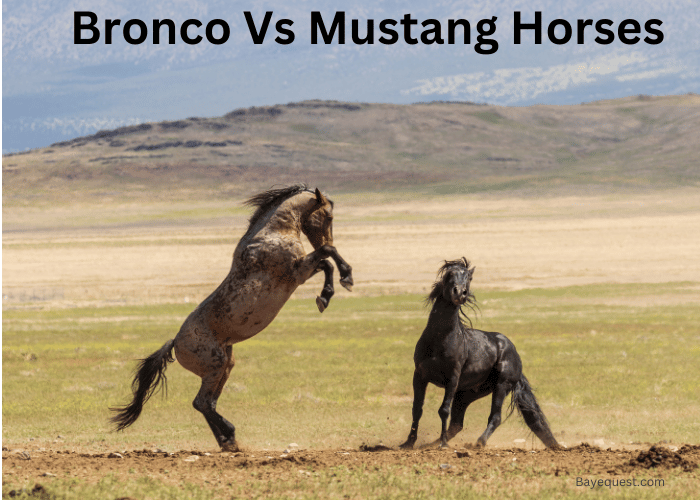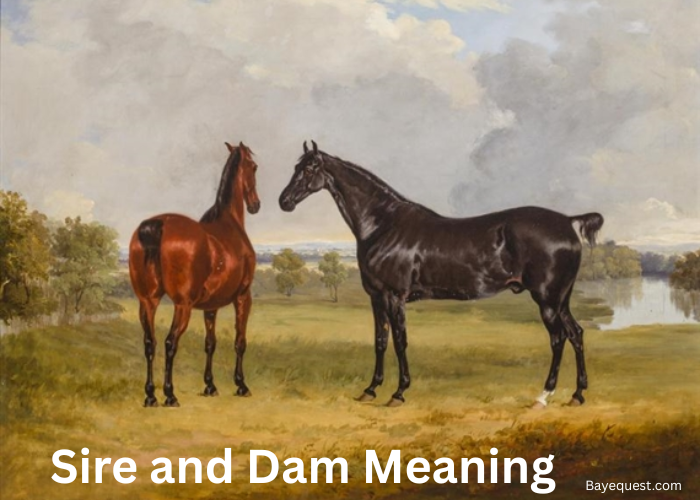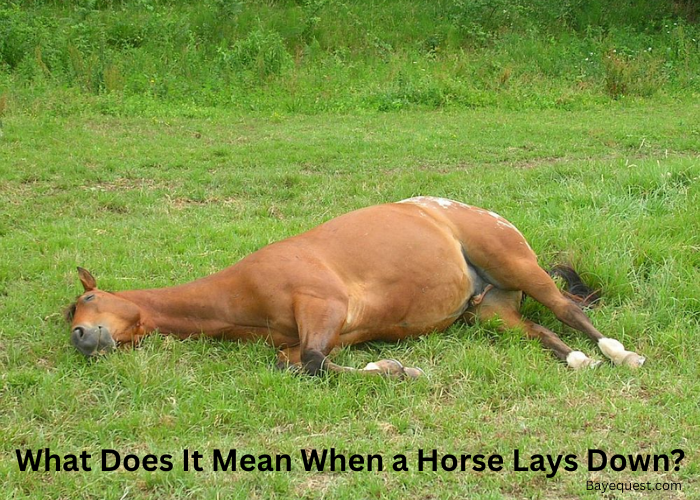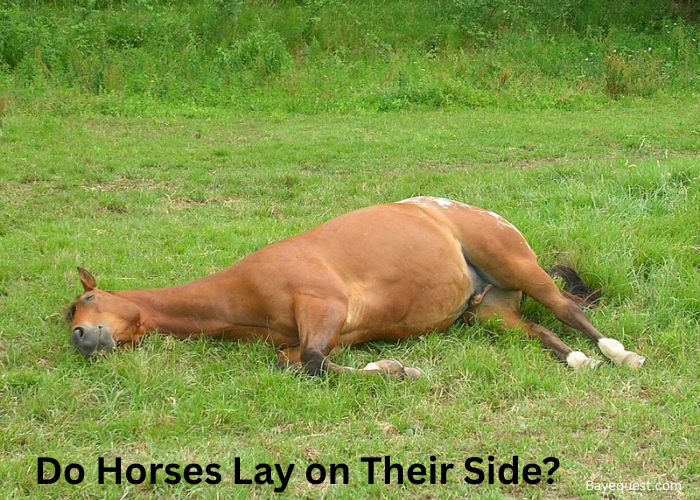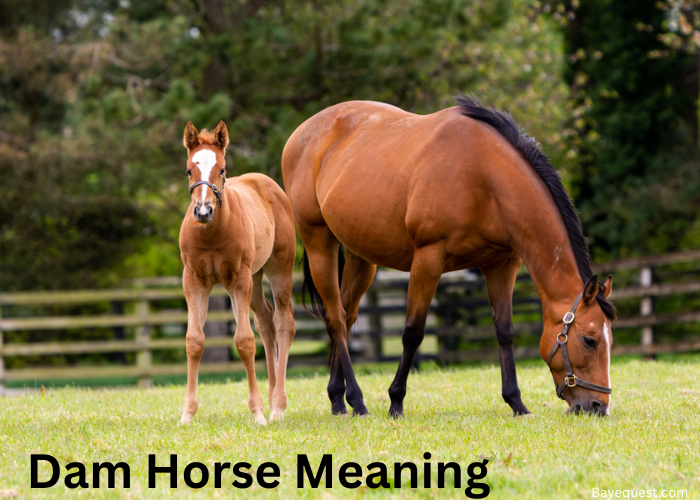Few horses get mixed up as often as the Bronco and the Mustang. Both are wild, tough, and known for their fiery kicks.
They share the same rugged build, stand around the same height, and even come in similar colors. No wonder people confuse them.
But here’s the twist: while they look alike, their stories are completely different. To truly tell them apart, you have to dive into the fascinating world of America’s wild horses.
It’s a journey every horse lover should take. Let’s get into it.
Bronco Vs Mustang Horses: Key Takeaway
Mustang horses are 13-15 hands tall. They are compact and stocky, perfect for rough terrains. Broncos are bigger, 14-16 hands tall, and muscular. They excel in rodeo events. Comparing bronco vs mustang horses, mustangs are resilient and sturdy, while broncos are strong and athletic.
What is a Bronco Horse Breed?
A Bronco, also known as a bucking horse, is any horse, regardless of breed, color, or gender, that tends to buck. Indeed, the term “bronco” comes from the Spanish word “broncos,” which means rough or gruff.
Alternatively, “bronco” refers to horses used in rodeo and rough stock events like bareback and saddle riding. It may also refer to horses that act up or buck without a rider.
Different communities have different names for the Bronco, including Bronchos and rough stock. However, most Americans call them Broncs.
Broncos were considered wild horses until recently. But modern broncs are domestic animals bred specifically for bucking in rodeo events.
A few also specialize in quickly and effectively throwing riders off. The Bronco is the official symbol of the State of Wyoming.
Characteristics of a Bronco Horse
Broncos are primarily defined by their unpleasant personalities. They have a wild, unpredictable temperament.
However, they also share a few additional properties. For instance, most broncs are medium-sized horses between 15 and 16 hands. Furthermore, broncos have smaller tails, manes, and ears than the average horse.

What is a Mustang Horse?
The Mustang is a horse breed originally from the western US. Historians believe they are descendants of Iberian colonial horses that arrived from mainland Mexico in the 1600s.
When the explorers left, the remaining horses spread throughout the west, living exclusively in the wild.
The feral horses lived mainly between the Great Plains and the Pacific Northwest, where thousands were rounded up and used in World War I.
The remaining herds lived on the public lands west of the Continental Divide until the Bureau of Land Management (BLM) relocated them to herd management areas.
BLM also monitors reproductive rates to prevent overpopulation and oversees adoption processes.
Characteristics of a Mustang Horse
The modern Mustang is a small horse, standing 14 to 15 hands tall. They’re characterized by flat heads with broad foreheads, sloping shoulders, and narrow chests. They’re athletic horses with short, strong backs and round hindquarters.
Paint patterns are common, though most registries don’t accept tobiano mustangs. You may also come across dun colorings and primitive markings.

Broncos Vs Mustangs: Key Differences and Similarities
Let’s discuss the key differences between the two to help you determine the right horse for your next project. The side-by-side comparisons can also help you identify your Mustang or Bronco from a herd.
Bronco vs Mustang Horse: Definition
The main difference between broncs and mustangs is that one refers to a breed while the other is a type of horse.
The Mustang is a recognized horse breed with a traceable bloodline and history. This means all the horses within the breed are descendants of a single stallion.
Of course, breeding has resulted in several Mustang strains. However, DNA studies reveal a single original stallion.
On the other hand, Broncos are defined by shared characteristics rather than blood relations, as defined by the Bucking Horse Association.
Any horse that meets these requirements is a bronco, irrespective of breed. This means that a few Mustangs are Broncos.
Mustang vs Bronco Horse: Origins
Mustangs are descendants of Colonial Spanish horses that arrived in the US in the 1500s. The strong, athletic ferals were the main means of transportation for early Spanish missionaries. They also performed light farm duties.
However, the missionaries abandoned them at the end of their missions. So, the ponies dispersed in every direction, eventually establishing wild colonies in the American West.
Most mustangs you see today are captured in the wild woodlands or purchased at herd management centers. You can also adopt one via the Mustang Heritage Foundation.
Meanwhile, the Broncos have an erratic history. The first ones appeared at least 100 years ago in present-day Mexico.
Then, some wandered to Canada while others settled in the US. However, Americans only began domesticating them 70-80 years ago.
Broncos Horses vs Mustangs: Habitat
Both broncs and mustangs are semi-wild, though both are domesticated in various breeding facilities countrywide.
The Mustang is a feral (free-roaming) horse most comfortable in open spaces in plains and deserts. Though you can find several domesticated individuals, a Mustang prefers the freedom of the wild, foraging in the forests and drinking from rivers.
They often live in small packs and hunt and drink together. They also depend on the group for security.
Similarly, Broncos are also free-range horses mostly found in the wild. They’re especially common in western North America. However, modern Broncs are domesticated animals that live on ranches, in pastures, and in stables.

Broncos vs Mustangs: Physical Properties
A Mustang and a Bronco are about the same size, though some Broncos are larger. The average Mustang is 13 to 15 hands tall at the shoulder, while the Bronco averages 14 to 16 hands. For context, the average horse is 15 hands.
The similarities extend to weight. They’re both within the medium range for mature horses, though the average Mustang is slightly heavier. Mustangs typically weigh 700 to 900 pounds, while the average bronc is 700 lbs.
You may also notice that Mustangs have a more compact and stocky build. This is critical for surviving the wilderness. Meanwhile, Bronco horses are leaner and more athletic for rodeo activities.
Bronco Horse vs Mustang: Speed
Mustang horses are generally faster than Broncos. Additionally, the Mustang is more enduring. Thus, mustangs regularly enter racing and endurance events.
A well-trained Mustang can reach 20-30 miles/hour. Meanwhile, the best Broncos only reach 20-25 miles/hour.
So, what makes the Mustang faster? It has to do with the physical disposition. If you closely examine a Mustang horse, you’ll notice they have a more streamlined and aerodynamic body.
Their shorter backs, longer necks, and narrower chests give them an edge over Bronco horses. Additionally, mustangs have smaller heads.
However, both are poor runners, given that the fastest quarterbred can reach 55 miles/hour while thoroughbreds occasionally reach 44 miles/hour.
Broncos vs Mustangs: Colors and Patterns
It’s nearly impossible to differentiate mustangs from broncos solely based on color, as the individual horses can be any color.
But dun and primitive patterns are common among Spanish horses, such as Mustangs. In contrast, tobiano-colored Mustangs are so rare that some associations, like the Spanish Mustang Registry, reject the color. So, you must be staring at a different breed if your horse is a tobiano.
Meanwhile, most Broncos are solid-colored, with bay and chestnut particularly common. Verify the horse’s ancestry to confirm the breed.
Broncos vs Mustangs: Temperament
You may want to look elsewhere if you prefer quiet, tame horses, as mustangs and broncs are semi-wild animals that require extensive handling experience.
Modern mustangs are the calmer of the two, thanks to their intelligence. They survived the wild by living in tight herds and communicating efficiently to find food and sniff danger.
Thus, they easily transfer those skills to their human owners. Nonetheless, they’re extremely cautious initially and require substantial training to follow instructions. Also, they’re destructive when bored.
On the other hand, a Bronco is, by every definition, wild. Like their cousins in the wild, their first response is fight-or-flight.
They explode with wild energy, bucking, twisting, and kicking like prey in a predator’s grasp.
Broncos vs Mustangs: Disciplines
You can tell by their characteristics that Mustangs are easier to train and more valuable than Broncos. But both are useful depending on your plans.
The Mustang is a great companion over long distances in unnatural terrain as it’s accustomed to life in the wild. In addition, their agility and stamina make them assets on the farm. Moreover, Mustang horses excel in reining, ranch work, endurance, and barrel racing.
Meanwhile, Bronco horses are bred for one thing – bronc riding. Also known as bareback or saddle bronc competitions, these events feature rodeo professionals riding unbroken horses that attempt to throw them off.
The International Professional Rodeo Association (IPRA) and Professional Rodeo Cowboys Association (PRCA) organize several such events annually.
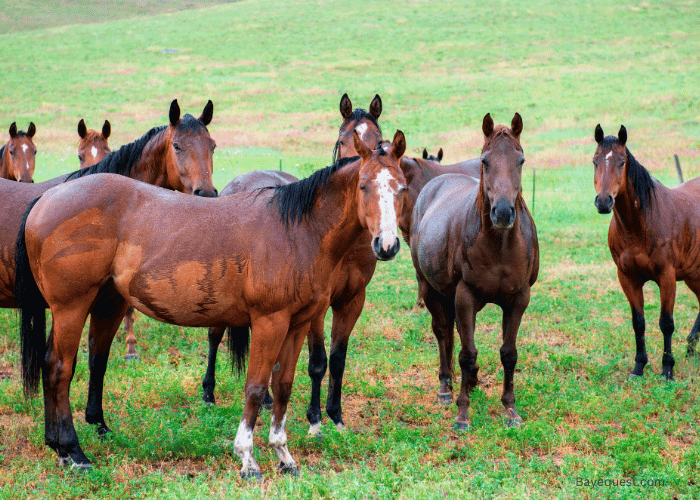
Broncs vs Mustangs: Where to Find
Neither Mustangs nor Broncs are easy to find. It’s even harder to find the “right” one. So, be prepared for a long search.
If you’re after a bronc, begin at the Bucking Horse Breeders Association (BHBA), Bronc Riding Nation (BRN), or United Bucking Horse Association (UBHA).
They have sufficient resources to help you find a great bronc. Next, consider the rescue center closest to you. Chiron, Silent Wave, and Rodeo City are great choices. Alternatively, you may catch one in the wild, though it’s easier said than done.
Meanwhile, mustangs are easiest to find at rescues. And where better to start than the Bureau of Land Management (BLM)?
They have thousands of mustangs at any given time and regularly give them away for pennies or free! Local breeders and advocacy groups can also point you to the right places.
Mustangs vs Broncos: Cost
Bucking horses are among the most expensive equines, while mustangs are fairly affordable. However, the actual prices vary significantly, depending on several factors.
The average Mustang costs $3,000 to $5,000. But the sale price ultimately depends on the market, your location, and the quality of the find. For instance, you can adopt a Mustang with basic training from BLM for $125. You may even adopt one for free.
Unfortunately, broncs are much more expensive. Of course, you can capture one in the wild if you’re confident. But few people are that lucky.
Instead, most Bronco owners acquire their stock from UBHA, BHBA, and similar organizations for $8,000 to $10,000. A few cost as much as $50,000.
Read also: Buckskin Vs Dun Horse.
Bronco Horses Vs Mustang Horses: Verdict
Though closely related, Mustangs and Broncos aren’t the same. For one, the Mustang is a horse breed, while broncos are horses that tend to buck.
Additionally, Bronco horses are semi-trained. Meanwhile, Mustangs are untrained horses. Most Mustangs still roam the wild.
So, which one is better? It depends on your goals. A Bronco is the perfect fit if you’re looking for a rodeo horse. Unfortunately, they excel in little else and aren’t great pets.
Meanwhile, consider a Mustang if you’re interested in endurance sports or trail riding.
See also: Mustang Horse Lifespan.
What is the Difference Between a Bronco and a Mustang? FAQs
What’s so special about Mustang Horses?
The Mustang isn’t a very special breed, per se. However, the horses’ ability to withstand harsh weather, poor terrain, and endless threats to survival is unmatched. They are also highly adaptable horses that take little time to become accustomed to their surroundings. This makes Mustangs excellent long-distance riders.
Is a Bronco a Stallion?
No, a Bronco isn’t a stallion. A Bronco is a type of horse with the tendency to buck. They’re most common in rodeo events. Indeed, some people call them rodeo horses. Meanwhile, stallions are male horses. Therefore, a male Bronco is a stallion. Similarly, stallions that buck may be Broncos.
Difference Between Bronco and Mustang Horse: Conclusion
Broncos and Mustang horses share many similarities. But they’re also different in many ways. The main similarity is that both Mustangs and Broncos are semi-wild.
Also, both are lean, muscular horses with a high work ethic. However, Mustangs are, by all definitions, wild horses and are mostly found in the forests. Also, mustangs are smaller, faster, and more agile.




